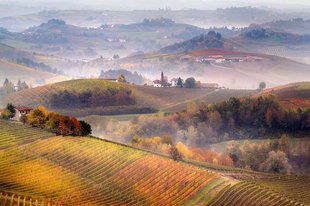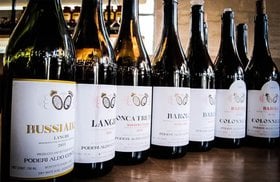Best Barolo Vintages: Finest Wines To Invest In 2025
Barolo is one of the world’s most age-worthy Nebbiolo wines. Outstanding bottles from the best Barolo vintages will make a perfect addition to your fine wine collection.
But, what makes some vintages stand out from the others?
A great Barolo wine is the result of several factors, including the producer, terroir, and even how you store your bottle.
Discover what makes a Barolo vintage exceptional and a detailed Barolo vintage chart. We’ll also look at the 10 best Barolo wines to buy in 2022, why you should invest in them, and how to do it easily through Vinovest.
Further reading
- Explore the world of Fine Wine Investment with this detailed guide.
- Also, check out 10 Delicious Barolo Vintage Wines and everything about this illustrious region.
What Makes A Barolo Vintage Exceptional?
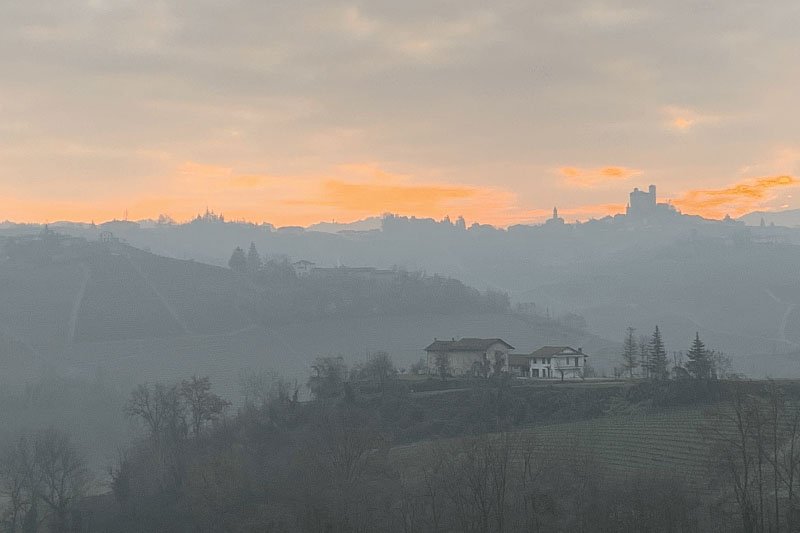
A great vintage is the result of great weather, perfect soils, brilliant viticulture and winemaking practices.
What weather conditions lead to a great Barolo vintage?
The Barolo region in Italy Piedmont is situated at a high altitude, resulting in cool temperatures. This makes Barolo wines incredibly acidic and tannic.
Warm years with minimal rainfall make the ideal conditions for Barolo’s Nebbiolo grape. Dry weather decreases the risk of mildew. The heat helps balance acidity and increases sugar and alcohol levels.
What soils make the best Barolo wines?
Vineyard sites located near La Morra have soft calcareous clay soils that stay cool during the day and absorb water. This dilutes the grapes, especially during heavy rainfall - making them taste fruitier and less intense.
Vineyards near Monforte dAlba and Serralunga dAlba have largely sandstone-based soils. This allows for water to drain effectively and prevents the grapes from becoming diluted.
Generally, the most collectible Barolo wines come from areas with sandstone soils like Monforte dAlba and Serralunga dAlba.
Of all the prestigious vineyards in Serralunga dAlba, the Vigna Rionda vineyard produces some of the most austere and age-worthy wines that are sure to impress any Barolo lover.
Critics and winemakers often use “Barolo Cru” and “Grand Cru Barolo” to compare these fine Barolo vineyard sites to Burgundy’s Grand Crus.
When is the ideal harvest time for Barolo wine?
Barolo’s Nebbiolo grape buds early at the beginning of April, and the typical harvest time is mid-October when it reaches perfect maturity.
Picking them early risks sacrificing the wine’s jamminess, fruit flavor, and tannins. A late harvest risks lousy weather affecting the grapes.
What Do The Best Barolo Vintages Taste Like?

As any wine lover knows, a classic Barolo is powerful and packed with tannins. It has notes of licorice, rose petals, and blueberries.
A mature Barolo wine has dark chocolate and leather nuances, which perfectly complement its powerful, tannic structure.
Which Are The Best Barolo Vintages? (Barolo Vintage Chart)
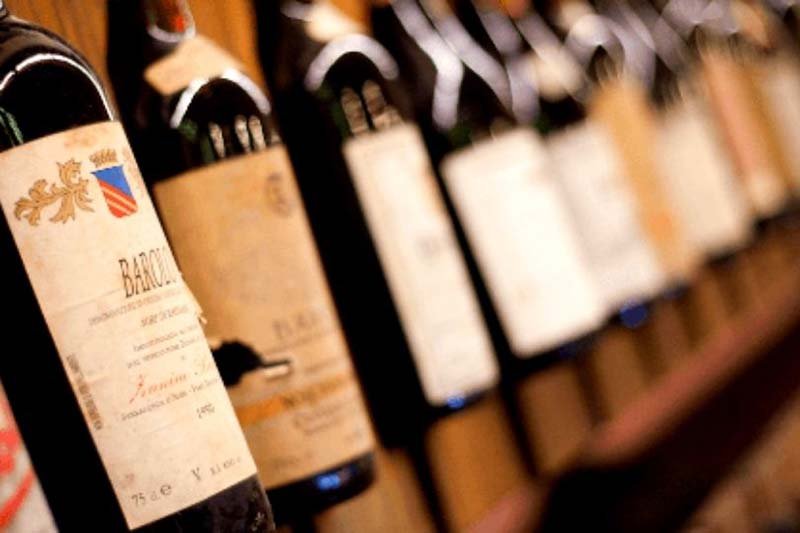
Here’s a handy Barolo vintage chart for you to refer to:
- 2018 Barolo Vintage: Early rains increased the risk of mildew, but a warm ripening season led to an excellent harvest. 2018’s top wines were incredibly nuanced and age-worthy - no wonder Jancis Robinson scored the 2018 Barolo DOCG Ravera 17.5/20.
- 2017 Barolo Vintage: 2017 wasa hot and dry year which resulted in classic Barolo wines with great tannin textures, high acidity, and ripe fruit flavors. Wine Spectator scored the 2017 vintage 94 points.
- 2016 Barolo Vintage: Ideal growing conditions resulted in a great vintage that received a score of 97 from Robert Parker’s Wine Advocate. These wines have classic Barolo flavors and slightly more tannins than in previous years. The 2016 Pio Cesare Barolo has been described as “il sogno” - “the dream.”
- 2015 Barolo Vintage: Warm summer days and cool evening temperatures posed a few challenges for growers in 2015. Wines from Cantina Bartolo Mascarello did very well and Antonio Galloni scored the Giacomo Conterno Barolo Riserva 99/100 points. Expect heady violet aromas, vivid berry flavors, and polished tannin.
- 2013 Barolo Vintage: A wine lover will particularly love the delicate flavors and fine tannins of the 2013 vintage. Copious rains in May filled up water tables for the upcoming heatwave. Barolos from Cavallotto’s Briccio Boschis vineyard did particularly well in 2013, as did Michele Chiarlo’s Barolo Cannubi from La Morra.
- 2010 Barolo Vintage: 2010 was a defining vintage and saw moderate weather conditions. This gave the wines good depth and complexity - worthy of Robert Parker’s Wine Advocate’s 98 points and Wine Spectator’s 97/100. Antonio Gallomi gave the 2010 Giacomo Conterno Barolo Riserva a perfect 100.
- 2008 Barolo Vintage: 2008 seemed like a year where grapes would ripen early, but cool weather slowed the precious growth cycle. Giacomo Conterno wines stood out with their ripe fruit flavors, powerful tannins, and elegant structure.
- 2007 Barolo Vintage: 2007 had one of the mildest winters and hottest springs in the 50 years preceding. Bruno Giacosa stands out as a top Barolo producer with their ripe, aromatic wines with velvety tannin.
- 2006 Barolo Vintage: Uneventful weather led to outstanding Italian wine in 2006. The vintage produced big, powerful wines with tart acidity. Wine Enthusiast gave the 2006 Michele Chiarlo Cerequio Riserva from La Morra 95 points.
- 2005 Barolo Vintage: Tough weather conditions made 2005 a tricky vintage to critique. But now, after more than 15 years of aging, the best Barolos are showing their pedigree with red fruit aromas, high acidity, and spice notes. Wine Enthusiast scored the 2015 Barolo DOCG Sarmassa a 94/100.
- 2004 Barolo Vintage: Early rains gave way to a mild winter and perfect temperature fluctuations in the summer. Expect elegant, age-worthy wines with exotic aromas. Wine Enthusiast added the 2004 Pio Cesare Barolo to their top 100 wines of 2009.
- 2001 Barolo Vintage: Warm weather and minimal rainfall gave 2001 the potential to be one of the decades’ best vintages. A great depth of ripe fruit, lively acidity, and robust tannins characterize 2001. Jancis Robinson scored the 2001 Barolo DOCG Sarmassa 18/20.
- 2000 Barolo Vintage: A warm spring and well-distributed rains laid the basis for an abundant crop. These Barolos are full-bodied, ripe, and slightly sweeter than other vintages. The 2000 Roberto Voerzio La Serra was given a 98/100 by Wine Spectator.
- 1999 Barolo Vintage: Snowy winter months and a hot spring led to a slightly late harvest. The 1999s have softened with age but remain powerful and structured with red fruit aromas. Keep an eye out for 1999 Bruno Giacosa wines in particular.
- 1998 Barolo Vintage: A dry year welcomed a much-needed rainfall in May. The long growing season concentrated grapes led to wines with ripe flavors and firm tannins, especially from Barolo producer Giacomo Conterno.
- 1996 Barolo Vintage: A rainy start to the year caused concerns of rot before a warm June dried out the vines. These Barolos are complex with ripe fruit aromas and deep tannins. The 1996 Vietti Barolo Rocche from Castiglione Falletto stood out with its dark color and virile fruit flavors.
- 1990 Barolo Vintage: Despite unpredictable weather and wildfires, 1990’s Barolos are powerful with opulent notes of concentrated red fruit and lively acidity. Robert Parker’s The Wine Advocate scored the 1990 Roberto Voerzio La Serra a 95/100.
- 1989 Barolo Vintage: A snow-free winter and warm spring led to perfectly dry harvesting conditions. 1989 was a year of big, alcoholic Barolos with ripe fruit flavors and structured tannins.
- 1988 Barolo Vintage: Strong red fruit flavor, perfume notes, bright acidity, and robust tannins gave this year's wine the structure to age beautifully.
- 1985 Barolo Vintage: A hot growing season produced wines with high alcohol levels - giving rise to the first modern hot vintage. 1985 is touted as the first year of the Barolo Boy’s modern style of Italian wine.
Which Were The Most Challenging Barolo Vintages?
Not every year in Italy Piedmont can be an outright success for Barolo wines, and sometimes weather conditions adversely affect the quality of the grapes and wines.
2009, 2011, 2012, and 2014 were challenging years for Barolo producers, and it's worth being careful when choosing wines from these vintages.
10 Brilliant Barolo Wines To Buy In 2024
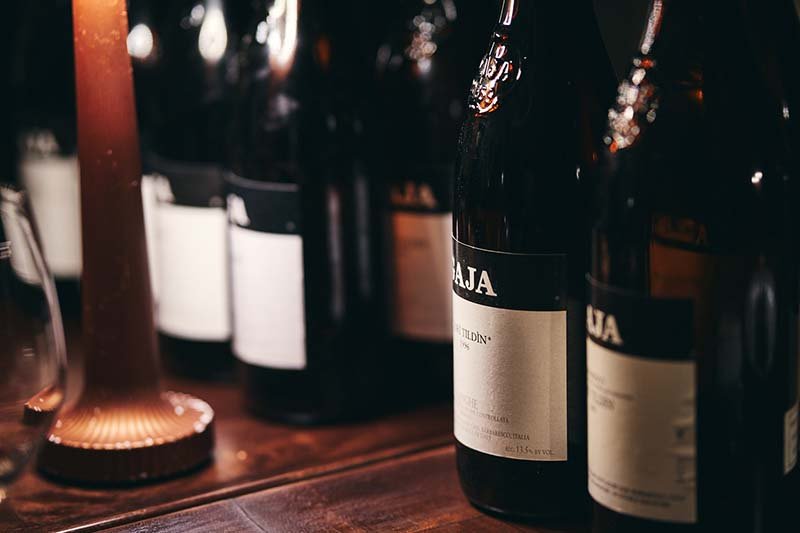
Here are 10 delicious wines perfect for any Barolo lover’s collection.
- 1978 Giacomo Conterno Monfortino ($5,521)
- 2016 Cappellano Otin Fiorin Pie Franco - Michet ($1,586)
- 1978 Falletto di Bruno Giacosa 'Le Rocche di Castiglione Falletto' ($1,504)
- 1996 Bartolo Mascarello Artist Label ($1,443)
- 1964 Giuseppe Rinaldi Barolo DOCG, Piedmont ($1,350)
- 1970 Giuseppe Mascarello Figlio Monprivato Ca d'Morissio ($1,327)
- 1996 G. B. Burlotto Barolo Monvigliero ($1,233)
- 1978 Poderi Aldo Conterno Granbussia ($1,114)
- 2006 Roagna Pira Barolo Riserva ($767)
- 1999 Giuseppe Rinaldi Cannubi San Lorenzo - Ravera ($635)
Why Should You Invest In The Best Barolo Vintages?

Barolo wines are known for their aging potential, especially the top-quality ones.
What is the aging potential of the best Barolo vintages?
A well-crafted Barolo wine is astoundingly complex and will mature for at least 20-30 years. Even some Barolos from the 1950s and 1960s are still drinking well today.
Does Barolo wine appreciate with age?
As these wines reach their peak, they show steady price increases. For example:
- A bottle of 1978 Poderi Aldo Conterno Granbussia appreciated 128% from $499 to $1,130 between 2020 and 2022.
- Between 2020 and 2022, a bottle of 1964 Giuseppe Rinaldi Barolo DOCG rose from $722 to $1,353 - that’s an impressive 87% increase.
How does Barolo wine perform at auctions?
Here’s a look at some impressive Barolo wine auction performances:
- A single bottle of 1978 Giacomo Conterno Barolo Riserva Monfortino sold in a 2017 Winebid auction for $2,900.
- At the 2019 Barlo Wine Auction, a bottle of 1990 Giacomo Conterno Barolo Riserva Monfortino sold for a whopping $1,757.
But:
How do you invest in a bottle without having to risk buying counterfeits?
If you want to add a fantastic Barolo vintage or any other fine wine to your collection today, reach out to Vinovest.
Vinovest is a wine investing platform that goes the extra mile to trace your wine's provenance and ensure its authenticity.
Invest In The Best Barolo Vintages Today!

With incredibly robust aromas, bright acidity, and powerful tannins, Barolo is a wine lover’s dream. These wines are known for their aging potential, and this is especially true for great vintages like 1996, 2001, and even the recent 2018 vintage.
Sign up with Vinovest and get your hands on investment-worthy bottles of the finest Barolo vintages. Vinovest makes buying and selling wines from around the world super easy with its advanced AI-based online platform.
